2.1 Gramática: Telling Time
2.1 Gramática: Telling Time
¿Qué hora es? Is used to ask What time is it? Use the following word order to tell the time in Spanish.
| Es la (for one o’clock) / Son las (for all other hours) + hour + y (and; past) + minutes |
| 1:20: Es la una y veinte; 2:10: Son las dos y diez |
| Es la (for one o’clock) / Son las (for all other hours) + hour + menos (to; till) + minutes |
| 12:40: Es la una menos veinte; 2:50: Son las tres menos diez |
To tell time in Spanish, start with:
Son las (for all hours except one o´clock)
Es la (for the one o´clock hour)
To distinguish for AM or PM, use:
de la mañana
de la tarde
de la noche
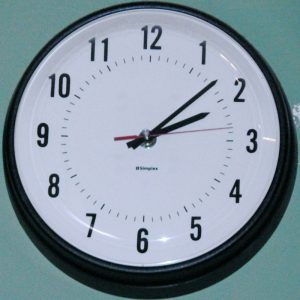 2:07
2:07
Son las dos y siete de la mañana.
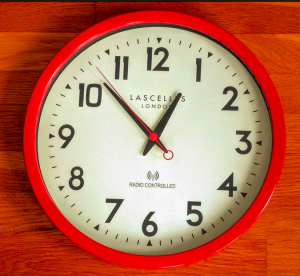
12:54
Es la una menos seis de la tarde.
Notes: In many Hispanic countries, printed schedules use the 24-hour clock.
- To indicate that an activity takes place at an undefined time of the day, use POR LA MAÑANA, POR LA TARDE, POR LA NOCHE.
- To express exactly, on the dot, sharp use EN PUNTO.
-
At what time…….? ¿A qué hora. . . ?
¿A qué hora es la clase de español? A las diez de la mañana.
(at) What time is the Spanish class? At ten a.m.
 ACTIVIDAD # 1
ACTIVIDAD # 1
Listen as your instructor says a time of day. Find the clock face that corresponds to the time you heard and write the time in Spanish.

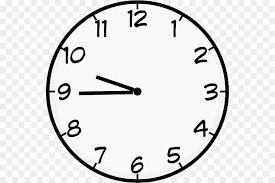

12:00 9:45 2:07
1.________________ 2. __________________ 3. ___________________
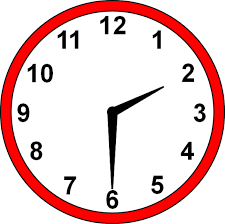
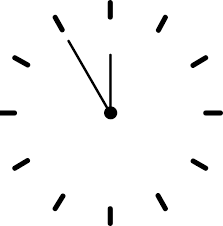
2:30 12:55
4. __________________ 5. ______________________
 ACTIVIDAD # 2
ACTIVIDAD # 2
¿Qué hora es? Express the time in full sentences in Spanish.
- 6: 10 p.m.
- 4:30 a.m.
- 1:15 p.m.
- 9:50 on the dot
- 12: 55
 ACTIVIDAD # 3
ACTIVIDAD # 3
Situaciones. How might the following people greet each other according to the time of the day? With a classmate, create a short dialogue for each situation.
Ejemplo: María y Jorge, a las once de la noche.
Jorge: Buenas noches, María
María: ¡Hola! Jorge, ¿Cómo estás?
Jorge: Bien y ¿tú?
María: ¡Muy bien!
- El profesor García y Rosa, a las diez de la mañana
- La Sra. Martínez y el Sr. Gómez, a las cinco de la tarde
- Tú y tu (your) profesora de español, en la clase de español
ACTIVIDAD # 4

